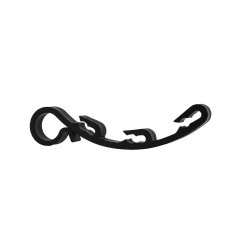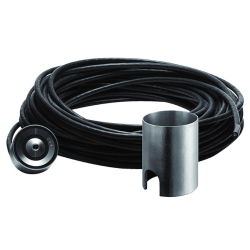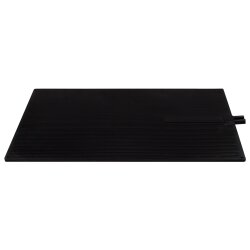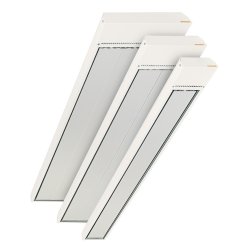*1 https://de.wikipedia.org/wiki/Schneelast
Our autumn checklist: Prepare now for the risks of frosty temperatures

Have you thought of everything to avoid frost damage?
The cold season is approaching in leaps and bounds. Therefore, now is exactly the right time to think about the coming expenses and dangers during the snowy and icy season. The remaining warm and above all dry days can be used to take appropriate precautions. After all, who likes to work outside in cold and wet weather? With our checklist you can make sure that everything has been thought of.
- Protect water pipes and drains from frost
- Avoid freezing of water tanks and drinking troughs
- Safely overwinter high value ornamental plants
- Protect roofs and carports from heavy snow loads
- Protect steps and ramps from icing up
- Keep car parks and footpaths free of snow and ice
In addition, we will show you suitable solutions with electric heating systems with which you can effectively protect your house and garden from frost and snow load damage and save you annoying tasks such as clearing snow and spreading gritting materials in icy conditions.


Water and frost: A dangerous combination for supply lines
Everyone knows that water expands when it freezes. This is precisely why freezing temperatures are one of the main reasons for burst water pipes and damaged containers, such as rain barrels and cisterns. But this does not have to happen at all, because there are practical electrical heat sources that keep temperatures above freezing point at all times.
Heating cables, also known as pipe trace heaters, are particularly suitable for this purpose and can be installed very flexibly. In this way, almost all conceivable shapes can be reproduced. With our frost protection heating cables, an integrated thermostat ensures that the heating cable is automatically switched on at temperatures below the 5°C limit and switched off after the object has warmed up sufficiently.
When selecting the right frost protection heating cable, however, it should be noted that there are quite simple models (Mi-Heat ETM heating cables) which must not be laid crossed or overlapping. Otherwise there is a risk that the heating cables could overheat at these points.
So-called self-regulating heating cables (Mi-Heat SPC heating cables), on the other hand, have an automatic limitation that reduces the heating power at the crossed points. This means that overheating of these heating cables is no longer possible. In addition, our self-regulating SPC heating cables are equipped with a particularly robust and UV-resistant insulation, which makes them ideal for outdoor use. Splash water protection according to IP67 and a circumferential protective conductor fabric inside the heating cable ensure the necessary operational safety.
Tip: For the most efficient operation of the anti-freeze heating cables, the heat transfer can be optimised using aluminium adhesive tape. In addition, it is advisable to provide the cables with suitable pipe insulation. The heating cable and thermostat are then inserted directly into the insulation.
Prepare gutters and downpipes for winter
With the arrival of autumn, the trees let their leaves fall and thus ensure full gutters every year. Leaves should be removed regularly during this time, as they hinder the rapid drainage of rainwater and, in the worst case, can completely block downpipes. If freezing temperatures are added to this in winter, the pipes can even burst due to the expansion of the freezing water.
Another risk is the formation of icicles if the gutters are frozen over and the condensation cannot run off. Although the ice looks picturesque, it can become a danger to people and animals or damage cars when it falls. Preventing icicles from falling down can even be part of the winter clearing obligation.
With gutter heating cables, these potential dangers can be avoided in advance. Thanks to suitable brackets, quick and easy installation in narrow and wide gutters (100-125mm / 150-300mm) is possible.
The heating cables can be controlled either manually via a switch, temperature-dependently via an outdoor thermostat or extremely demand-oriented by means of an ice and snow melting control. Thanks to separate sensors, an ice and snow melt control also determines the moisture in the gutter or pipe in addition to the outside temperature. This means that heating is really only carried out when there is moisture and frosty temperatures, which enables particularly energy-efficient operation of the system.


Avoid heavy loads on light roofs
A white snowy landscape in winter can undoubtedly be a wonderful sight. In some regions, the snow can become a real burden, in both senses. In addition to the annoying task of shovelling snow from pavements, entrance areas and parking spaces as part of the winter clearing obligation, the weight of the snow can also become a real problem.
While dry, loose fresh snow weighs about 30-50 kilograms per cubic metre, the same amount of wet old snow can weigh up to half a tonne. *1 This can be a real danger, especially for comparatively "light" roof structures, such as those on summerhouses, greenhouses or carports.
A Germany-wide division into so-called snow load zones provides information about the potential risk. The highest classification (currently Zone 3) is given to the Alps, the Bavarian and Thuringian Forest, the Ore Mountains, the Harz Mountains and the Western Pomerania region.
Here, too, electric heating cables can be used to prevent expensive damage. For this purpose, weather-resistant fastening tapes are first mounted on the roof at a distance of approx. 50 cm, into which hard-wearing and UV-resistant heating cables are then inserted. The heating cables should be laid in strips with a spacing of approx. 10-15 cm (so-called loop spacing) to enable the snow to thaw quickly and evenly.
Adequate to the gutter heating cables, the control can be carried out via a commercially available switch, an outdoor thermostat or a fully automatic ice and snow melting control.
Unfallgefahr bei Schnee- und Eisglätte minimierenMinimise the risk of accidents in icy and snowy conditions
In winter, snow and ice turn many a staircase or driveway into a real slippery slope. But there are ways to get through the winter safely without having to constantly shovel and spread snow.
With so-called outdoor heating mats, which are electrically operated, the desired areas around the house can be kept free of ice and snow at all times. In an earlier blog post, we already reported in detail on the various possibilities and explained the correct installation under stone coverings, in screed and mastic asphalt, as well as on concrete surfaces. Matching to this, intelligent control systems for efficient and economical operation are also presented.
There are also solutions that require much less installation work. Rubber heating mats for outdoor use are ideal for securing house entrances, steps or ramps. The durable heating mats are particularly non-slip thanks to their rubber coating and can be removed without leaving any residue after the winter. A watertight plug-in system allows flexible design of the heating system to suit your own needs.
Tip: Avoiding the use of gritting materials such as salt, grit and sand protects the environment and the building fabric. It also eliminates the need for costly cleaning and disposal work, as no more grit is carried into the building via the shoes.

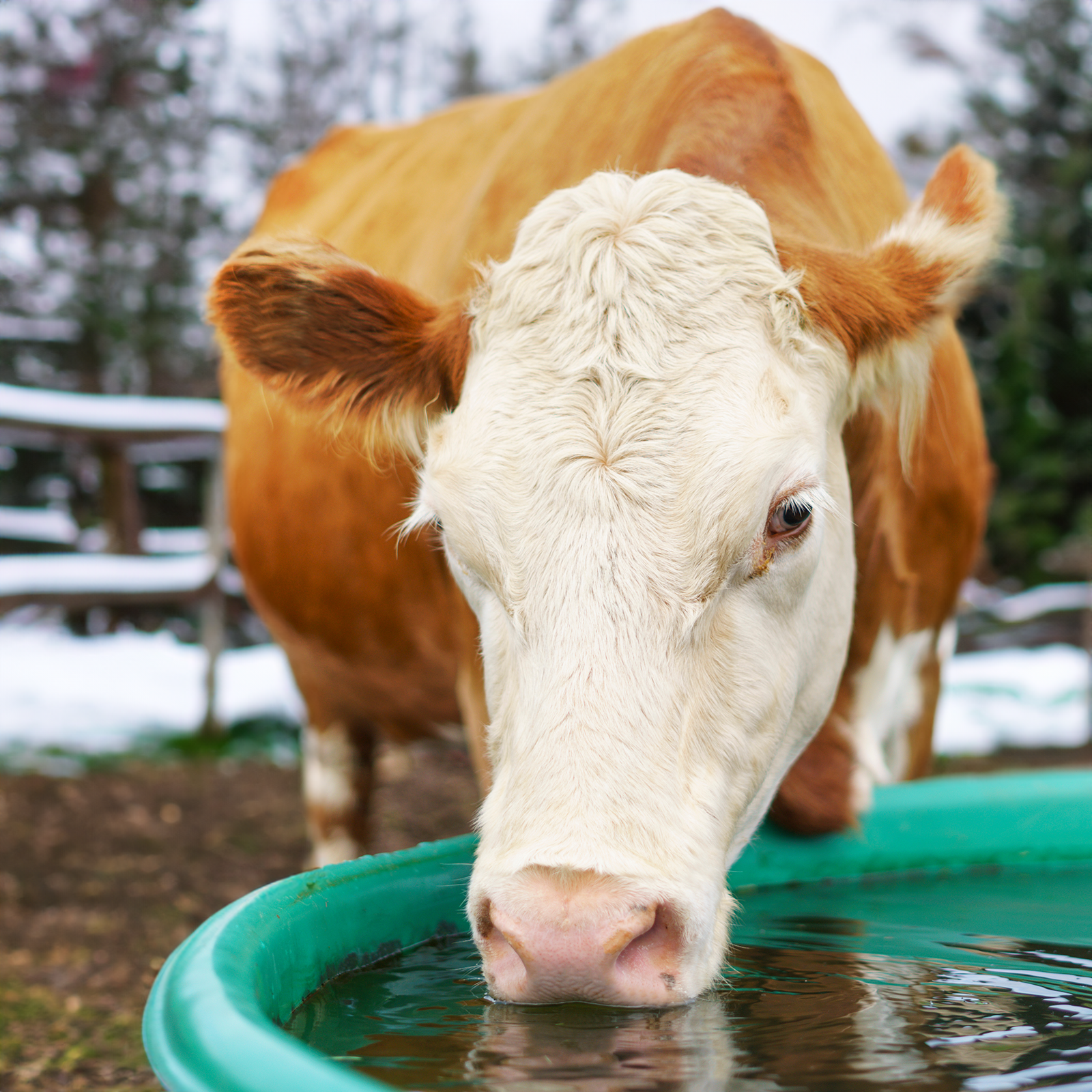
Important: Do not forget animals and plants!
Now that we have shown you some winter hazards and expenses for humans and pointed out risks for possible material damage, we will finally turn our attention to the animal and plant world. Because here, too, electric heat sources can provide valuable support.
For example, our frost protection heating cables can also be used to prevent water troughs and animal food containers from freezing. However, the UV-resistant and self-regulating SPC heating cable should be used so that it is not damaged if it slips.
SPC heating cables are also ideal for protecting frost-sensitive potted plants. For this purpose, they are simply wrapped around the planters or directly around the root balls of the plants. In combination with an additional thermal fleece (plant protection cover), nothing stands in the way of safe overwintering.
If you have a greenhouse, small and medium-sized plants can be overwintered very well in it. If the thermometer drops too low in sub-zero temperatures, infrared heaters can help. We have already reported on this in our blog.
Tip: Some plants are only considered winter-hardy to a limited extent and can tolerate frost down to -10 °C at the most. These include extremely popular garden plants such as olive trees, hemp palms, banana plants and almond trees. If a heating cable is wrapped around the trunk, they can survive much lower temperatures without damage.
Download free Mi-Heat autumn checklist
To make sure you don't forget anything, we have prepared our autumn checklist for you to download as a practical PDF file. You can simply print it out and tick off the items you have completed.
Are you also planning an electric heating solution and still have questions? We will be happy to help you.

 Deutsch
Deutsch






